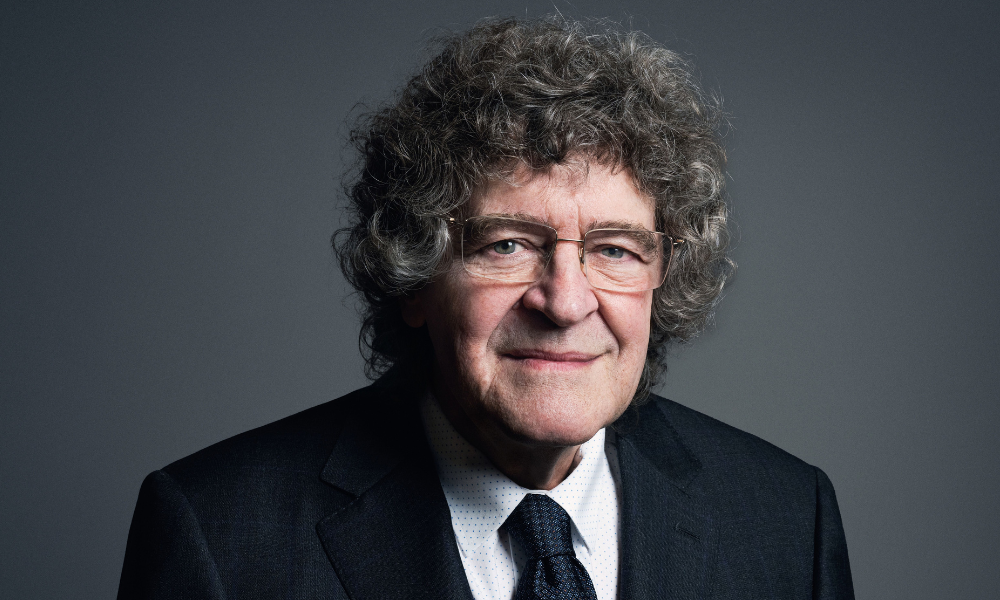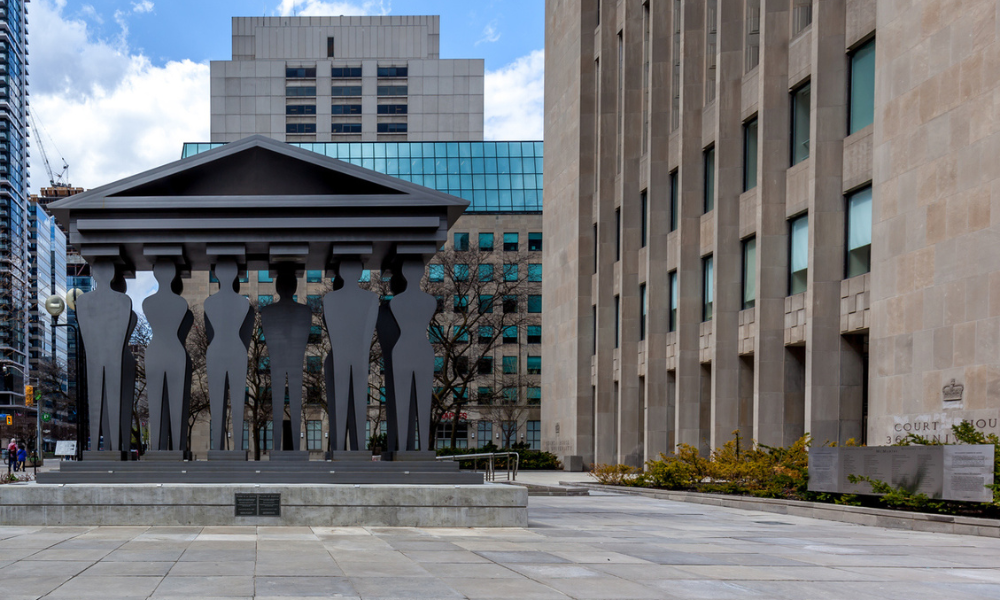For the London, Ont., firm of Ledroit Beckett, the extraordinary case of retired Roman Catholic priest Charles Sylvestre, who pleaded guilty in early August to 47 charges of indecent assault against the same number of young female victims over three decades beginning in the 1950s, is another in a major portfolio of significant sex abuse cases the firm has taken on.
 The 11-member litigation practice has carved out a role in representing victims of institutional sexual abuse, including a panoply of cases in southern Ontario - including victims of clergy in the Diocese of London, where Sylvestre was employed - and elsewhere in Ontario.
The 11-member litigation practice has carved out a role in representing victims of institutional sexual abuse, including a panoply of cases in southern Ontario - including victims of clergy in the Diocese of London, where Sylvestre was employed - and elsewhere in Ontario.
The firm has four practitioners devoted to cases of sexual abuse. One of them is seconded full-time, along with two lawyers part-time, to the Cornwall Public Inquiry under Commissioner G. Normand Glaude investigating widespread allegations of abuse including by clergy in Cornwall, Ont. The inquiry resumed sitting last week.
Sexual abuse claims are "90 per cent of my practice," says the firm's Rob Talach. Ledroit Beckett is representing at least a dozen of Sylvestre's alleged victims. He was parish priest in various communities in and around Sarnia, Chatham, and Windsor.
Victim impact statements read in court detail individual histories where the priest befriended the girls by offering treats like candy bars or recruiting them to do church jobs, and then sexually or physically assaulting them, in what might be the largest case of female sexual abuse by Roman Catholic clergy in Canada and possibly North America.
Ledroit Beckett's practice and its high-profile cases over the years have garnered the firm "a lot of media attention," Talach acknowledges, and victims have often gravitated towards it when bringing lawsuits not just against direct perpetrators but the institutions that supervised or employed them, whether these were church dioceses or school boards.
In Sylvestre's case, suits being handled by Ledroit Beckett and the other London firm in the litigation, Legate & Associates, name at least one English and one French school board along with the Diocese of London, the Order of the Grey Nuns, and the Sarnia police department. But Talach noted, "our claims are different and our litigation plans are different."
Ledroit Beckett has also represented victims of clergy abuse in other Ontario dioceses, including Pembroke, Alexandria-Cornwall, Sault Ste. Marie, Hamilton, and the Archdiocese of Toronto. In the Diocese of London, the firm has been involved in actions against such clergy as Anthony Onyenagada, Barry Glendenning, John Blake Harper, Konstanty Przybylski, and consulted on Cameron MacLean.
But Sylvestre likely represents the biggest case against young female victims. "This is the biggest with respect to the number of victims," Talach says.
Karen Hulan, who's handling the file at Legate & Associates, says she "doesn't recall any [case] being bigger based on the case law that I've seen. . . . I know that Mt. Cashel [the Newfoundland orphanage abuse cases] was quite large but that didn't involve women." More victim impacts will be read in this month followed by sentencing submissions in October.
For Hulan, the firm has represented victims as far back as the mid-1990s and is actually handling the bulk of the lawsuits in Sylvestre. The five-member boutique litigation firm headed by Barbara Legate specializes in personal injury, "so, yes, it's certainly encapsulated within the personal injury practice that we have," Hulan says.
Many of the actions her firm is filing focus on the responsibility not just of clergy and school boards but on law enforcement in the 1960s because of evidence that allegations of abuse were brought, for example, to the Sarnia police's attention in 1962 but never investigated.
"Somewhere along the line between the police and the diocese and the knowledge that the school board and the nuns had, they dropped the ball and as a result [Sylvestre] was shifted to other schools in southwestern Ontario and continued his career," says Hulan.
Talach says in bringing litigation, counsel have been helped immeasurably by certain case law and statutes, many fairly recent, that have extended liability and grounds for costs.
Critical, for example, are the Supreme Court of Canada's judgments in Bazley v. Curry (1999) and John Doe v. Bennett (2004) addressing various liability or holding institutions acting as employers - in this case, a diocese - responsible for actions of its agents or priests.
In Bazley, for instance, the Supreme Court set a test to determine whether an institution is liable, such as creating an environment that allows the agent to abuse power, or somehow obtains benefit from the agent's continuing presence in the organization.
The Bennett decision used the test and linked for the first time an institution, the Newfoundland diocese of St. George's, to the priest who perpetrated the assaults, arguing the bishop had not just spiritual oversight of the agent but temporal or secular oversight as well.
"This includes the direction, control, and discipline of priests," said the ruling. "If the bishop is negligent in the discharge of these duties the corporation is directly liable."
Talach says prior to Bennett, lawyers for plaintiffs would have had to ploddingly "go through the mechanics" of establishing the relationship between the perpetrator and employer. But now if the priest's victims are those within the parish realm or "accessed to his exercise of priestly duties," liability "will be automatic."
In this case "essentially all" the victims fit the category because they were under Sylvestre's trust or assisting in parish activities such as counting collections or folding church bulletins.
Meanwhile, on the statutory side, the 1995 Victims Bill of Rights allows for recovery of damages for emotional distress for victims of sexual assault as well as immediate family members.
"That enhances the cost issue," Talach says, mandating costs "will be recovered on a substantial indemnity basis." It also "creates a legal presumption of mental distress" leading to automatic distress damages "whereas prior to this you would have had to lead evidence."
Moreover, the 2002 Limitations Act exempts victims of sexual abuse from commencing actions within the normal two-year limit and allows it during, it states, "any time in which the person with the claim is incapable of commencing the proceeding because of his or her physical, mental or psychological condition."
Individual claims are expected in the $4.5-million range, an amount usually beyond provable damages, says Talach. "But I think there's a real exposure here to those amounts" because of such things as the "clear-cut evidence of negligence" by the various institutional parties that oversaw Sylvestre's behaviour but simply transferred him from one parish to another over many years.
Talach is seeking $1 million for punitive damages alone and $500,000 for general damages, though the highest award for a sex abuse case in Canada has been $250,000. The firm hopes to push this limit "due to the severity of abuse and its impact on many" of these victims, he says.
In a statement last month, Ronald Fabbro, bishop of the Diocese of London, offered his "deep regret" to Sylvestre's victims and apologized "for the failure of the Church to protect the victims and their families."
Talach says his firm has had good co-operation with the diocese, noting there's a "learning curve" among dioceses when they are confronted with sexual abuse charges.
"We're at the extent now that we have a mutual respect in the litigation process and we work through this thing in a businesslike fashion," he notes. That compares to other dioceses that are "still somewhat militant when it comes to litigating these cases."
Peter Lauwers of Miller Thomson LLP is representing the Diocese of London, and says the diocese has offered professional counselling to the victims, noting that tends to be the practice for most Ontario dioceses responding to sexual abuse victims by their clergy.
"It may or may not have the effect of mitigating damages," he says, but that's not its "primary objective." Instead "the diocese wants to take care of people who have been adversely affected."
Lauwers says the diocese hopes the claims will be settled outside court through alternative dispute resolution, which Talach's firm proposed and which Hulan's firm also favours.
"We don't really want them to go through, or put the victim, quite frankly, through the exercise of civil trials if we can avoid them," he says.
 The 11-member litigation practice has carved out a role in representing victims of institutional sexual abuse, including a panoply of cases in southern Ontario - including victims of clergy in the Diocese of London, where Sylvestre was employed - and elsewhere in Ontario.
The 11-member litigation practice has carved out a role in representing victims of institutional sexual abuse, including a panoply of cases in southern Ontario - including victims of clergy in the Diocese of London, where Sylvestre was employed - and elsewhere in Ontario. The firm has four practitioners devoted to cases of sexual abuse. One of them is seconded full-time, along with two lawyers part-time, to the Cornwall Public Inquiry under Commissioner G. Normand Glaude investigating widespread allegations of abuse including by clergy in Cornwall, Ont. The inquiry resumed sitting last week.
Sexual abuse claims are "90 per cent of my practice," says the firm's Rob Talach. Ledroit Beckett is representing at least a dozen of Sylvestre's alleged victims. He was parish priest in various communities in and around Sarnia, Chatham, and Windsor.
Victim impact statements read in court detail individual histories where the priest befriended the girls by offering treats like candy bars or recruiting them to do church jobs, and then sexually or physically assaulting them, in what might be the largest case of female sexual abuse by Roman Catholic clergy in Canada and possibly North America.
Ledroit Beckett's practice and its high-profile cases over the years have garnered the firm "a lot of media attention," Talach acknowledges, and victims have often gravitated towards it when bringing lawsuits not just against direct perpetrators but the institutions that supervised or employed them, whether these were church dioceses or school boards.
In Sylvestre's case, suits being handled by Ledroit Beckett and the other London firm in the litigation, Legate & Associates, name at least one English and one French school board along with the Diocese of London, the Order of the Grey Nuns, and the Sarnia police department. But Talach noted, "our claims are different and our litigation plans are different."
Ledroit Beckett has also represented victims of clergy abuse in other Ontario dioceses, including Pembroke, Alexandria-Cornwall, Sault Ste. Marie, Hamilton, and the Archdiocese of Toronto. In the Diocese of London, the firm has been involved in actions against such clergy as Anthony Onyenagada, Barry Glendenning, John Blake Harper, Konstanty Przybylski, and consulted on Cameron MacLean.
But Sylvestre likely represents the biggest case against young female victims. "This is the biggest with respect to the number of victims," Talach says.
Karen Hulan, who's handling the file at Legate & Associates, says she "doesn't recall any [case] being bigger based on the case law that I've seen. . . . I know that Mt. Cashel [the Newfoundland orphanage abuse cases] was quite large but that didn't involve women." More victim impacts will be read in this month followed by sentencing submissions in October.
For Hulan, the firm has represented victims as far back as the mid-1990s and is actually handling the bulk of the lawsuits in Sylvestre. The five-member boutique litigation firm headed by Barbara Legate specializes in personal injury, "so, yes, it's certainly encapsulated within the personal injury practice that we have," Hulan says.
Many of the actions her firm is filing focus on the responsibility not just of clergy and school boards but on law enforcement in the 1960s because of evidence that allegations of abuse were brought, for example, to the Sarnia police's attention in 1962 but never investigated.
"Somewhere along the line between the police and the diocese and the knowledge that the school board and the nuns had, they dropped the ball and as a result [Sylvestre] was shifted to other schools in southwestern Ontario and continued his career," says Hulan.
Talach says in bringing litigation, counsel have been helped immeasurably by certain case law and statutes, many fairly recent, that have extended liability and grounds for costs.
Critical, for example, are the Supreme Court of Canada's judgments in Bazley v. Curry (1999) and John Doe v. Bennett (2004) addressing various liability or holding institutions acting as employers - in this case, a diocese - responsible for actions of its agents or priests.
In Bazley, for instance, the Supreme Court set a test to determine whether an institution is liable, such as creating an environment that allows the agent to abuse power, or somehow obtains benefit from the agent's continuing presence in the organization.
The Bennett decision used the test and linked for the first time an institution, the Newfoundland diocese of St. George's, to the priest who perpetrated the assaults, arguing the bishop had not just spiritual oversight of the agent but temporal or secular oversight as well.
"This includes the direction, control, and discipline of priests," said the ruling. "If the bishop is negligent in the discharge of these duties the corporation is directly liable."
Talach says prior to Bennett, lawyers for plaintiffs would have had to ploddingly "go through the mechanics" of establishing the relationship between the perpetrator and employer. But now if the priest's victims are those within the parish realm or "accessed to his exercise of priestly duties," liability "will be automatic."
In this case "essentially all" the victims fit the category because they were under Sylvestre's trust or assisting in parish activities such as counting collections or folding church bulletins.
Meanwhile, on the statutory side, the 1995 Victims Bill of Rights allows for recovery of damages for emotional distress for victims of sexual assault as well as immediate family members.
"That enhances the cost issue," Talach says, mandating costs "will be recovered on a substantial indemnity basis." It also "creates a legal presumption of mental distress" leading to automatic distress damages "whereas prior to this you would have had to lead evidence."
Moreover, the 2002 Limitations Act exempts victims of sexual abuse from commencing actions within the normal two-year limit and allows it during, it states, "any time in which the person with the claim is incapable of commencing the proceeding because of his or her physical, mental or psychological condition."
Individual claims are expected in the $4.5-million range, an amount usually beyond provable damages, says Talach. "But I think there's a real exposure here to those amounts" because of such things as the "clear-cut evidence of negligence" by the various institutional parties that oversaw Sylvestre's behaviour but simply transferred him from one parish to another over many years.
Talach is seeking $1 million for punitive damages alone and $500,000 for general damages, though the highest award for a sex abuse case in Canada has been $250,000. The firm hopes to push this limit "due to the severity of abuse and its impact on many" of these victims, he says.
In a statement last month, Ronald Fabbro, bishop of the Diocese of London, offered his "deep regret" to Sylvestre's victims and apologized "for the failure of the Church to protect the victims and their families."
Talach says his firm has had good co-operation with the diocese, noting there's a "learning curve" among dioceses when they are confronted with sexual abuse charges.
"We're at the extent now that we have a mutual respect in the litigation process and we work through this thing in a businesslike fashion," he notes. That compares to other dioceses that are "still somewhat militant when it comes to litigating these cases."
Peter Lauwers of Miller Thomson LLP is representing the Diocese of London, and says the diocese has offered professional counselling to the victims, noting that tends to be the practice for most Ontario dioceses responding to sexual abuse victims by their clergy.
"It may or may not have the effect of mitigating damages," he says, but that's not its "primary objective." Instead "the diocese wants to take care of people who have been adversely affected."
Lauwers says the diocese hopes the claims will be settled outside court through alternative dispute resolution, which Talach's firm proposed and which Hulan's firm also favours.
"We don't really want them to go through, or put the victim, quite frankly, through the exercise of civil trials if we can avoid them," he says.







